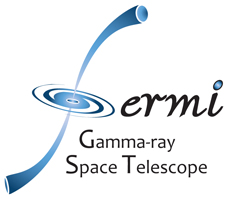First Light!
We had our first-light press teleconference this afternoon. You can find the information and the slides here. The gorgeous full-sky image, based only on about 95 hours of the first engineering data is shown below, and here is a link to higher-resolution versions (with annotation and without annotation).

Because we look in all directions, it’s a bit challenging to map all those directions onto a flat screen or piece of paper. The image you see is an unrolling and flattening of the whole sky. If you prefer to see the whole “globe”, there is a movie here. That bright band is our own milkyway galaxy glowing brightly in gamma rays. The brightly flaring object billions of light years away, 3C454.3, mentioned in the previous post, is the bright source in the lower left side of the image.
This is what we saw just opening our eyes and taking a first glimpse of the universe with this wonderful new facility, and it is comparable with the image that took years to make with the previous instrument, EGRET, on the Compton Gamma-ray Observatory. Here is one way to think about this: the advent of air travel enabled the crossing of a continent in just a few hours, instead of many months by wagon, and that fundamentally changed our culture. By analogy, I hope you can get a sense of what this new facility means to us!
It took many people from around the world working together to produce this image. I will include remarks from some of them in future posts, along with more perspectives about what the images mean to us and what we are learning.
A new name: the Fermi Gamma-ray Space Telescope
The teleconference concluded with an announcement of the new name for the observatory, dedicated to Enrico Fermi. Quoting from the teleconference site:
Biography of Enrico Fermi
Enrico Fermi (1901-1954) was an Italian physicist who immigrated to the United States. He was the first to suggest a viable mechanism for astrophysical particle acceleration. This work is the foundation for our understanding of many types of sources to be studied by NASA’s Fermi Gamma-ray Space Telescope, formerly known as GLAST.
Fermi is most noted for his work on the development of the first nuclear reactor and for his major contributions to the development of quantum theory, nuclear and particle physics, and statistical mechanics. He was awarded the Nobel Prize in Physics in 1938 for his work on induced radioactivity and is today regarded as one of the top scientists of the 20th century.
In addition to his direct connection to the science, Fermi holds special significance to the U.S. Department of Energy, the Italian Space Agency, and the Italian Particle Physics Agency.
We also have a spiffy new logo:
The “f” is an abstraction of a black hole system with an accretion disk (swirling matter falling into the black hole) and emerging jets of very high-energy particles, which emit gamma rays. This is one of the key topics for us to study with the new data.
